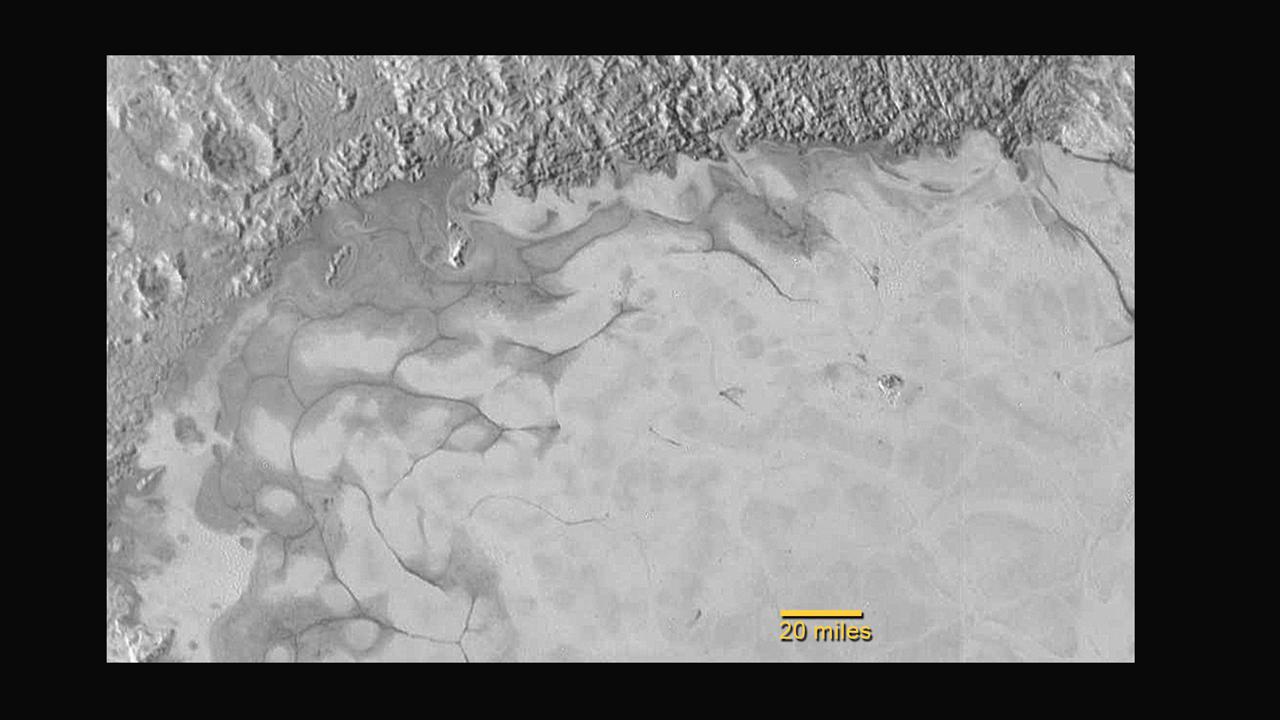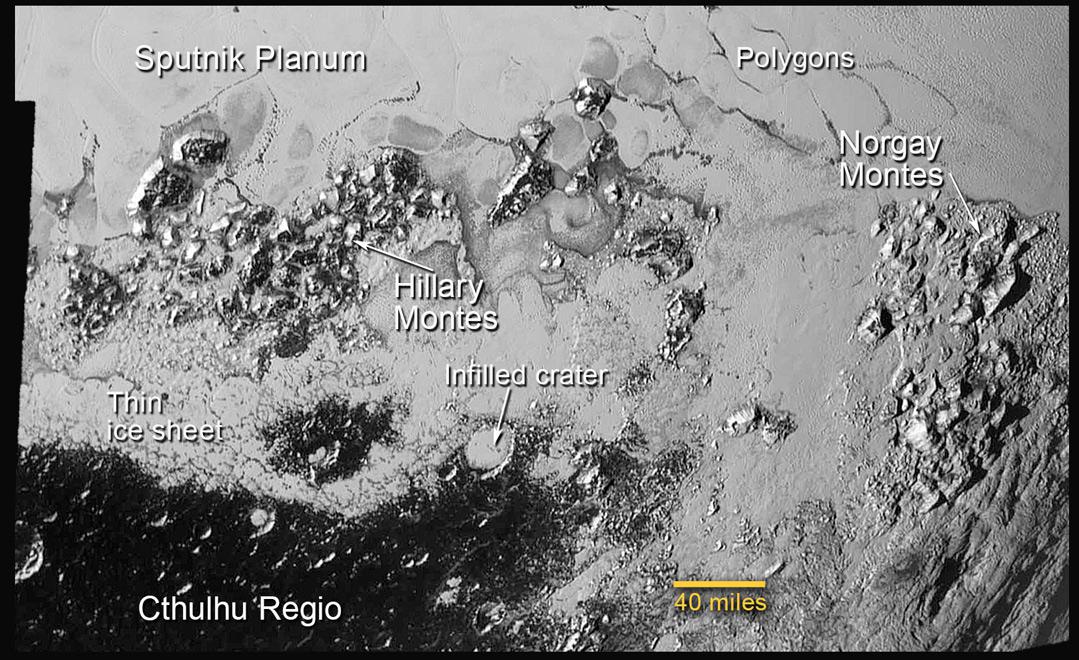I’ve been expecting—and seeing—amazing images of Pluto from the close approach flyby of the New Horizons probe from mid-July. And even though I knew the images taken once the spacecraft was past Pluto would be lovely, I still wasn’t quite prepared for just how awe-inspiring they would be.
Behold:

Photo by NASA/JHUAPL/SwRI
Oh, WOW.
That was taken when New Horizons was about 2 million kilometers (1.2 million miles) past Pluto, when the tiny rock and ice world was very nearly between the spacecraft and the Sun. New Horizons looked over its shoulder, back at Pluto, to capture this breathtaking picture.
The ring of light you are seeing? That’s Pluto’s atmosphere! Light passing through that cold, thin, nitrogen gas gets scattered, bent, and we see it as a halo surrounding the night side of Pluto.
This image is surreal; both familiar and alien. We see a similar sort of photo every time there’s a solar eclipse. But as rare and lovely an event that is, this is no moon … it’s Pluto. Five billion kilometers from Earth, we see the dark side and eerie atmospheric glow of another world.
This image is more than just art. The brightness of the halo tells scientists how thick Pluto’s atmosphere is, how high it reaches. It also reveals the presence of haze, particles of ethylene and acetylene, in the atmosphere that extend up to 150 kilometers above the surface! That’s unexpected; haze was expected lower in the atmosphere, but not so high up. Another mystery for scientists to ponder. Could this be pointing to weather, albeit ethereally thin weather, on Pluto?
Not only that, but another detector on New Horizons showed that the surface pressure on Pluto has decreased hugely over the past two years: The atmosphere has lost about half its mass! Pluto orbits the Sun on an ellipse, and is currently heading away from the Sun, getting colder. Its axis is tipped by 120° to its orbit (compare that to Earth’s 23° tilt), so it has extreme seasons as well. Did a huge amount of Pluto’s atmosphere freeze out over the past two years as parts of Pluto chill? That’s possible, but this is only one data point. We’ll be getting more data from the probe sent back to Earth over the next few months, and hopefully they will reveal what’s going on in Pluto’s air.
Art and science. Hand and hand, as always.
But there’s more.
This image makes me very very happy. It shows the northern part of Sputnik Planum (the upper left part of the heart-shaped feature on the surface), the ice plains we’ve seen in earlier images. I speculated that the area looks very much like there’s been fluid flow, flooding or seepage, where liquid has lapped up and filled in low lying areas near the hills and mountains nearby.

Photo by NASA/JHUAPL/SwRI
I was very close! Look specifically at the darker gray area where the flat region meets the hilly one. You can see swirls in the pattern, which is exactly what you expect if viscous ice has flowed around obstacles. What you’re seeing there is glacial flow on Pluto! But the ice in this case is not water ice, but nitrogen ice. At Pluto’s temperature, nitrogen ice should flow glacially much as water ice does on Earth.
That’s incredible.
Here’s another image, a mosaic of the Sputnik Planum region, this time to the south:
Again, powerful evidence that there’s bulk motion of fluids on Pluto. The infilled crater in the middle fills me with delight; the depression in the surface has been filled by nitrogen ice flowing into it. The glaciers appear to have flowed around and filled in the lower areas around the Hillary Montes as well.

Photo by NASA/JHUAPL/SwRI
The thin ice sheet is fascinating too; the polygonal shape to the segments indicates it can’t be too thick, which may be due to the surface cracking and making segmented sheets as the ice below it moves around.
Alan Stern, the New Horizons principal investigator, said that if the ice is thick enough (tens to hundreds of meters) it could liquefy underneath, so the ice is moving on top of liquid nitrogen. This is not at all clear yet though.
All of this may be easier to see if you watch this amazing 3-D flyover animation made using the geometry deducted from these images:
Amazing. Simply amazing.
And as always, let me say that these are still a drop in the bucket of the data we’ve received so far from New Horizons. These are still relatively low-resolution images; the high-resolution data still sit on the probe’s hard drive, slowly being transferred across the vast distance of the solar system back to Earth. It’ll be months before it’s all down, and as it dribbles in we’ll see more and more incredible features on Pluto, and in much more detail than we have now.
This is all still a taste of what’s to come. And even then, this will be the best data we’ll have of Pluto for decades to come. Scientists will be planning their careers over these data.
As well they should. There are lifetimes’ worth of science to explore at Pluto.
Correction, July 24, 2015 at 19:40 UTC: I originally said this was a solar eclipse at Pluto, but in fact the Sun was slightly off to the side in this shot, so Pluto was not physically blocking the Sun in the picture.